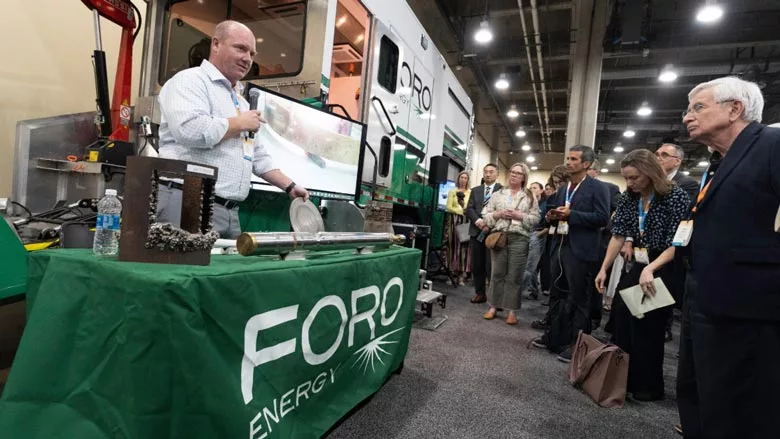Advancing Geothermal Drilling Technology is Focus of DOE Research Agency
Need to develop drilling equipment that works at near 400°C

Foro Energy and other geothermal drilling innovators attended ARPA-E’s Innovation Summit in August to exhibit progress on their ARPA-supported projects.
Source: ARPA-E Innovation Summit
The leadership of the Department of Energy (DOE) agency that funds research of high-impact energy technologies that are not ready for private-sector investment is focused on advancing geothermal drilling technology so it will perform at very high temperatures, says the agency’s leadership.
Rob Mellors, program director at the DOE’s Advanced Research Projects Agency-Energy (ARPA-E), told The Driller that current geothermal technology is based off oil and gas technology and none of that technology is designed to work at temperatures above 200°C.
“Above 200 and 250 degrees centigrade, equipment starts to fail, so we’re investigating the possibility of geothermal reservoirs at near 400 degrees centigrade,” said Mellors, who added that geothermal drillers need to have “tools in hand that can survive at 400 centigrade.”
For drilling equipment to successfully perform at such high temperatures, the industry “require(s) new tools, new sensors, new drilling methods and new cements and things like that,” Mellors said. ARPA-E’s role is to identify the “possibilities [and] where our [ARPA-E] help is needed,” Mellors added. “Our focus is the technology.”
Developing such an energy technology takes time, and ARPA-E’s programs are “typically three to four years long,” Mellors said. “After that, we turn it over to somebody else, whether funding from another agency or commercial.”
To determine if ARPA-E can develop such geothermal technologies, the agency is gathering input from the driller community, Mellors said.
“We’re really looking farther ahead down the road. So what is stopping us from doing geothermal at 400 degrees centigrade, for example? What are the showstoppers? And can we do anything about it with a three-year ARPA-E program?” he added.
To enable ARPA-E to identify the projects that it can help, the agency’s budget for FY2024 is $459 million, of which about $420 million is allocated to fund projects, according to Peder Maarbjerg, who is ARPA-E’s assistant director for external coordination.
However, geothermal technology research is new to ARPA-E, and specific funding has not been allocated for that research, according to Maarbjerg.
“We haven’t done a geothermal program in specifics. We’ve done one-offs through our open programs,” he said, explaining that under the “open programs,” a researcher can propose “any idea,” and that has resulted in ARPA-E funding “some interesting geothermal” research.
Maarbjerg stressed that ARPA-E is “not like a normal DOE office, where every year we plan to do ‘X’ for geothermal and ‘Y’ for solar, et cetera.” Rather, ARPA-E is “program driven” and a program is fully funded within a federal fiscal year for three years, Maarbjerg said.
“That would all be in that fiscal year’s timeframe in the money sense, even though in the time sense it would go on beyond that [fiscal year],” he said.
However, while ARPA-E spending for geothermal technology research is likely to increase, the agency’s leadership currently cannot speculate as to when technology that is developed through that funding will be advanced enough to be commercialized.
“Some of the answers might be done in that kind of time span,” Mellors said. “I really don't know.”
“I don't think we'll get hard time frames” on the commercialization of the geothermal technology, Maarbjerg concluded. “But timeframes will [eventually] become clearer.”
Looking for a reprint of this article?
From high-res PDFs to custom plaques, order your copy today!







